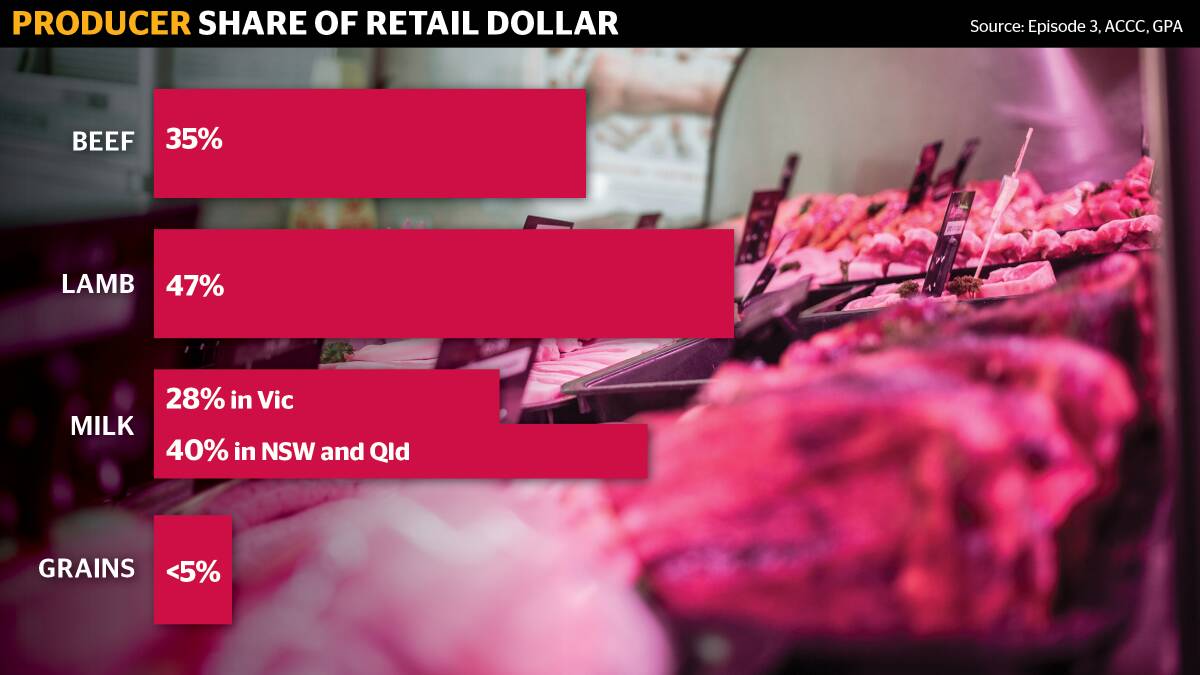
The cattle producer's share of the retail spend on steaks and mince has indeed come back but it looks very good compared to the grain grower's take of the bread dollar.
Subscribe now for unlimited access to all our agricultural news
across the nation
or signup to continue reading
It's now around 35 per cent, down from what was a record peak of close to 58pc at the end of 2021 when sale yard prices were pushing the boundaries of the stratosphere.
Analysis from Matt Dalgleish at Episode 3 shows that while this is the lowest it has been since 2014, the average from 1998 until 2014 was 33pc so it could be the situation is reverting to the long-term mean.
By comparison, dairy farmers get between 28pc and 60pc of the price of milk and wheat growers take less than 5pc of the money spent on bread.
Most industry commentators believe that recent peak for the cattle producer's share of the beef spend represented very unusual circumstances and is unlikely to be repeated, at least for some time.
The lamb producer's share of the retail spend currently sits at 46.6pc, which is the lowest it has been since the first quarter of 2013, Episode 3 data shows.
Once again, given the average lamb producer share from 1998 to 2017 was 49pc, it could be suggested that the current decline is just a move back to the more normal long term situation, Mr Dalgleish said.
"Although, I'm not sure lamb producers would feel that way as it is a fair discount on the 60 to 70 per cent share they had been enjoying in recent years," he said.
Episode 3 converts quarterly national saleyard prices in carcass weight terms into an estimated retail weight equivalent and compares to average retail beef prices as reported by the Australian Bureau of Statistics to come up with the analysis.
In the dairy industry, supply chain profit analysis conducted by the Australian Competition and Consumer Commission shows the farmer's share of the cost of a litre of milk ranges from 28 per cent to 60pc.
The ACCC's final report in 2018 from its inquiry into the competitiveness, trading practices, and transparency of the Australian dairy industry contained a graph on the distribution of revenue from the sale of drinking milk.
For private label, also known as house brand or generic milk, farmers in NSW and Queensland were receiving 60pc when milk was selling for a dollar a litre in supermarkets. For branded product those same farmers received 40pc of milk selling at $1.50/l.
In Victoria, producers received 42pc of the $1-a-litre milk and 28pc of branded milk.
Grain producers take a share of the retail dollar far less than their animal product colleagues.
Grain Producers Australia's submission to the current Australian Parliament's Agriculture Committee food security inquiry quotes United States National Farmers Union data showing the farmer receives just 20c of the $4.19 paid for a loaf of bread. That is less than 5pc.
For a $12 six-pack of beer, the farmer gets just 7c.
"It is not unrealistic to expect similar numbers derived from the retail dollar, paid to Australian grain producers through the local supply chain," the GPA submission said.


